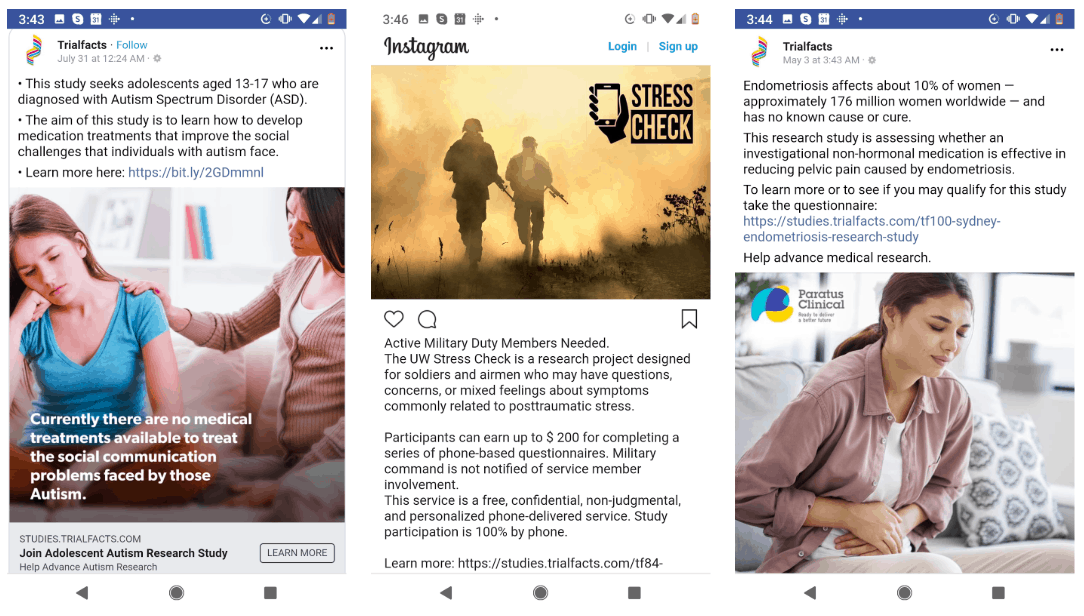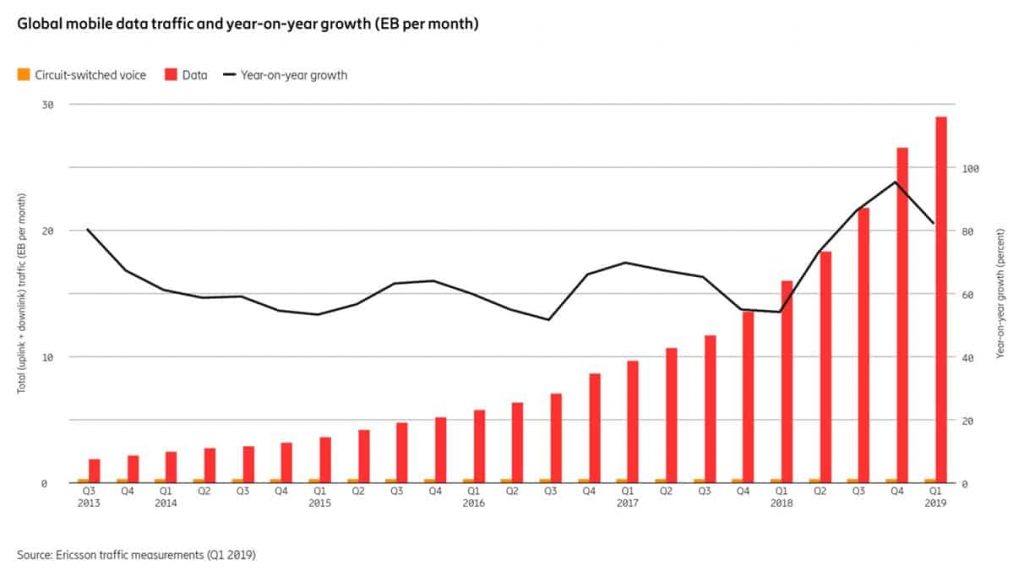Over the last five years, there have been shifts within the clinical trial and advertising industries that have changed the face of recruitment, including an increase in the data available and an improved ability to identify and target the most qualified potential participants for clinical trials. Learning about these changes and being aware of them when planning a study is important as these can heavily impact the outcomes of a clinical trial.
Participant recruitment continues to be the main challenge faced by studies with close to two-thirds of study sites being unable to meet requirements for participant enrollment. For example, upwards of 20% of cancer-related trials fail because of issues with participant enrollment.
We’re going to examine the biggest shifts in clinical trial recruitment over the last five years and what they mean for you. As we continue to see the rise of digital media and the personalization of marketing messages, the way participants are recruited will need to keep pace to ensure success.
The Decline of Traditional Media
Traditional advertising channels have been replaced by their digital counterparts with increasing speed over the last five years. For example, instead of newspapers many now read the news through platforms like Reddit, Facebook, and Twitter, while regular television has been challenged by Youtube, Netflix, and other streaming services.
Traditional methods of advertising like television, radio, mass mail-outs, and other print sources are simply not as effective as they once were because of reduced audience sizes and declining reach. Marketers have responded by reducing their traditional ad spending year over year, with these trends expected to continue into 2022.
While traditional advertising methods are more familiar and likely what study sites are most comfortable with, the results from these services are no longer consistent or predictable. Hiring a recruitment company with experience in digital media is a great way to maximize a study’s recruitment budget and stay competitive.
Digital media offer on-demand, personalized services that can be accessed by audiences on mobile devices at any time and from any location. This shift provides advertisers with a decided advantage over traditional large scale advertising campaigns where messaging had to be designed to appeal to generalized audiences.
Social Media Advertising and Personalized Messaging
In the case of participant recruitment, we can now use highly specified recruitment criteria to advertise directly to ideal candidates. With an increase in the use of machine learning and proprietary algorithms by companies like Facebook to optimize advertising, there are up to 100,000 different factors that can influence message delivery.
As data has enabled more targeted paid advertising, it has also meant a significant decline in organic reach to numbers as low as 2% of users seeing your content on the platform, with Facebook suggesting this number will eventually reach zero. Increasingly, users are being shown content in their timelines from friends and groups that create “meaningful interactions,” and less from businesses and their respective Facebook Pages.
What this means for you is that your paid advertisement for a clinical trial will get in front of the right people more often than with traditional methods, making it more cost-effective and increasing your return on investment. The data available also allows Trialfacts to complete it’s Due Diligence process with increasing precision, enabling us to bring predictability and consistency to the participant recruitment process at every step of the way.

Trialfacts uses highly targetted and personalized ads, ensuring your trial gets in front of the right people.
Additional changes have seen the continued rise of video as a preferred communication channel and this is expected to continue. Trialfacts is using video as a recruitment tool as it allows us to extend our reach and connect more personally with potential participants.
Continued Rise of Mobile Device Use
Mobile device use continues to grow rapidly and plays an important role in how Trialfacts designs its advertising campaigns.
Across all of our recruitment, 76% of participants access information on their smartphones and another 9% use tablets.
The amount of time spent on mobile devices is on average a staggering 6.5 hours a day, with 35% of that time spent scrolling social media. Globally, mobile data traffic has increased by 82% between Q1 2018 and Q2 2019.

In our recruitment we see only 15% of users accessing online information via a desktop computer. This has meant a shift in how advertisements for social media and other online formats are designed. Very little is now designed solely for desktop users and emphasis is put on the mobile experience.
Landing pages, digital ads, screening tools, and sign-up forms all need to be easy to use and purposefully designed to optimize the user’s experience on their mobile device. For example, best practices suggest minimizing unnecessary images, optimizing the use of white space, using single-column layouts, and putting a call to action button at the top of your mobile page.
Diversity and Inclusion in the Clinical Trial Industry

Ethnic diversity and minority representation in participant enrollment have become increasingly important as study designs are more mindful of the need for representative samples. This becomes even more important when we consider that some treatments work differently or are not as effective in non-white populations. Trialfacts has seen an increase in requests for age and gender matching between control and treatment groups, requests for more diverse populations, and an increase in research being done into rare diseases thanks to large investments from organizations like the National Institutes of Health.
These factors have made recruitment more challenging as a ‘one-size-fits-all’ approach that may have worked five years ago using traditional advertising is no longer as effective. Personalization of recruitment messaging is more commonplace as different populations respond better to advertising messaging that reflects their circumstances.
Additional changes have seen the introduction of a wide variety of tech-based solutions designed to help participants remain engaged and enrolled in clinical trials. Based on data collected before and during the study from surveys, enrollment data and wearable technology like the Apple Watch, study teams can now track and monitor protocol adherence and even predict when a participant may be at risk of dropping out of a study.
To increase participant recruitment many study sponsors have increased the number of competitive enrollment studies they conduct. Whereas study sites may have each given a quota of the number of participants they were to recruit, a competitive enrollment study incentivizes sites to enroll as many participants as possible and receive additional financial compensation. As a result, many sites increasingly fund their own advertising campaigns in efforts to increase the number of eligible participants in the study.
The changes to both the clinical trial and advertising industries over the last five years have had a significant impact on the way that participants are recruited. With a focus on using data to drive outcomes, increasing precision in both the treatments under investigation and the participants required for a successful trial is now the norm. The trends towards the use of mobile technology, the rise, and the popularity of video and the continual increase of social media use are all expected to continue.

